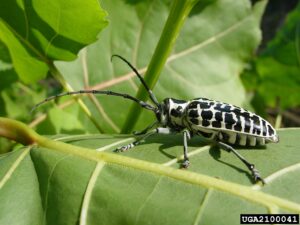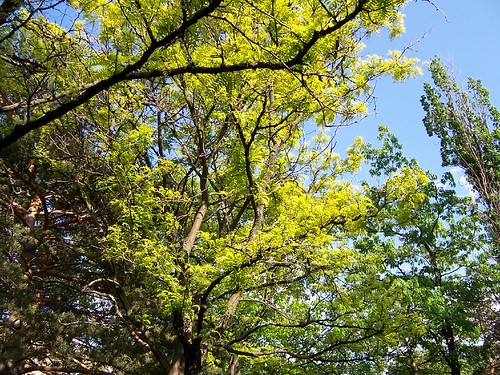
Date March 24, 2023
Texas-area homeowners who find their trees invaded by wood-boring insects know how destructive these creatures are. The amount of damage these insects can do far outweighs their size. They can invade healthy trees, causing significant damage, or they can take over previously infected and diseased trees, exacerbating the damage. Knowing what wood-boring insects to look for as well as what type of damage they can incur can help homeowners prevent further damage to their trees.
What Are Some Common Wood-Boring Insects?
Image via Forest Pests
Not only do wood-boring insects cause damage to wood inside buildings, but they can also invade trees. They feast on branches, bark, and trunks of shade trees and shrubs. A few of the more common types of wood-boring insects include:
- Carpenter Ants: Typically black with a round middle section, carpenter ants tunnel through wood structures and leave sawdust behind. They also prefer wood damaged by rot.
- Carpenter Bees: While they resemble bumblebees, carpenter bees are much more destructive to wooden structures. Adult females tunnel through wood to lay eggs and leave a trail of sawdust behind. They prefer bare wood, so painted and stained wood is less appealing.
- Wood-Boring Beetles: The larvae cause the most damage, although adults also do their share of boring. The three groups of wood-boring beetles include powderpost (this type attacks hardwood with low moisture content), false powderpost (this type infests both hardwood and softwood), and deathwatch (this type infests soft and moist wood).
What Kind of Damage Do Wood-Boring Insects Do?
Wood-boring insects most commonly target diseased, weakened, or damaged trees. These insects are often referred to as “secondary invaders” because they attack only after the trees are already in distress. They can contribute to the plant’s decline. However, some wood-boring insects are primary invaders that can attack healthy trees and eventually kill them.
Often, homeowners don’t notice wood-boring insect infestations until the trees or shrubs begin to die or show signs of external damage, such as sawdust, which is also called frass. Holes formed by these insects are usually round, oval, or semicircular. The insects damage the plants by tunneling through the inner bark layer into the sapwood that transports water and nutrients to the leaves. Those insects feasting on the tree at the time of harvest can end up inside homes if the lumber is used for firewood, furniture, or remodeling.
How Can Homeowners Prevent Wood-Boring Insect Infestations?
Because most wood-boring insects are secondary invaders, one of the best courses of action involves annual tree maintenance. The proper care of trees and shrubs discourages these insects from taking up residence in the plants. Homeowners can minimize plant stress and stimulate growth by maintaining proper fertilization and watering practices. They should also promptly care for any broken limbs, thin during the colder months, and remove infested or dying plant parts.
Homeowners in the Dallas area who are concerned about wood-boring insect infestations should reach out to TreeNewal. Our ISA-certified arborists can provide an inspection and have the knowledge to prevent and treat tree insect infestations.









